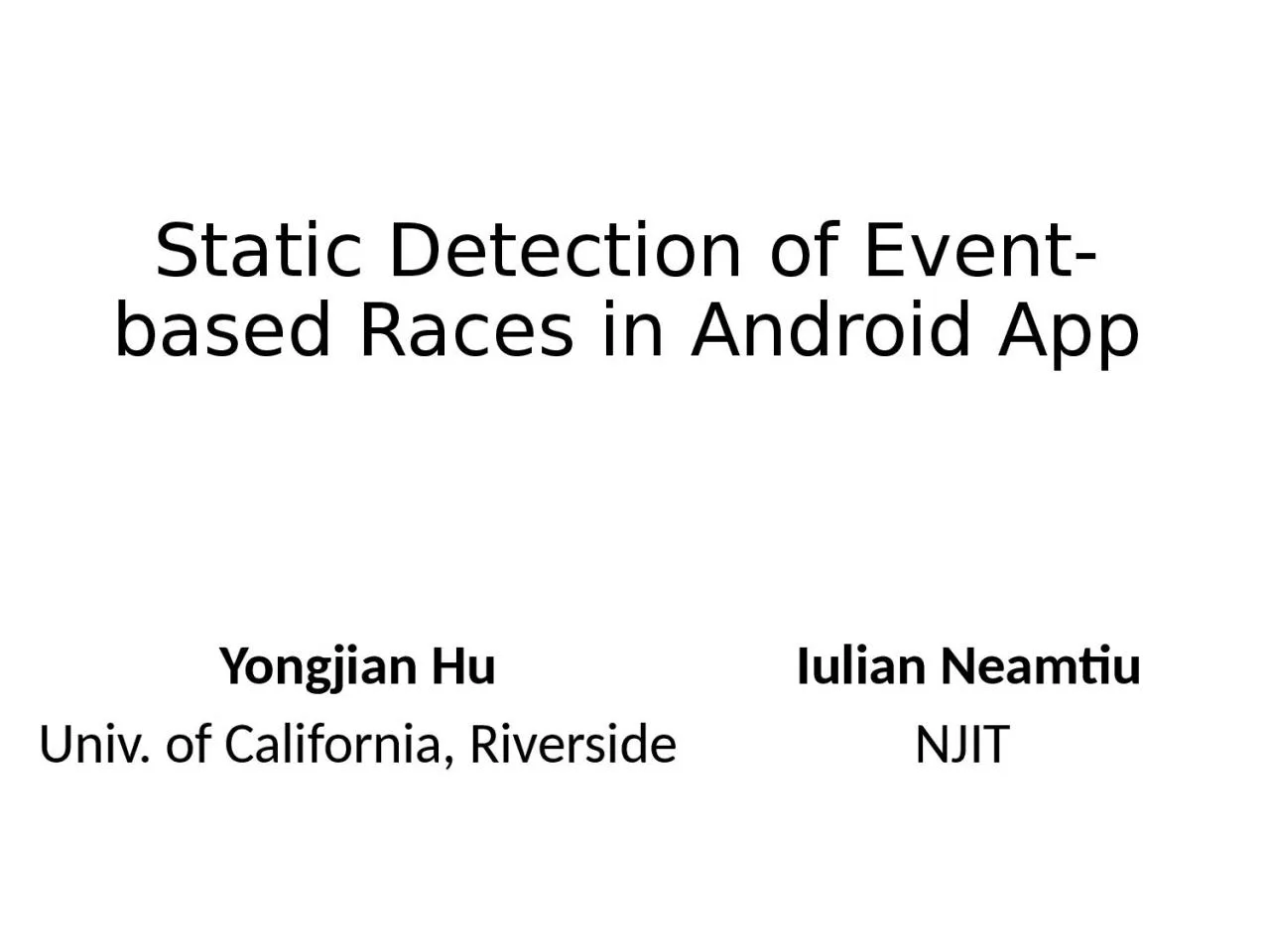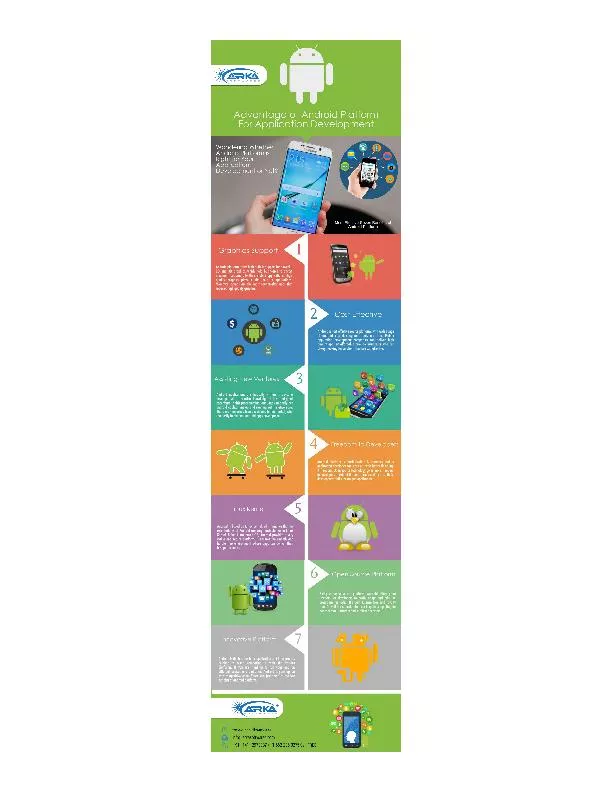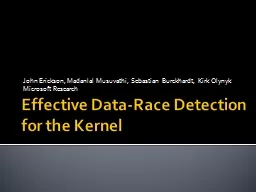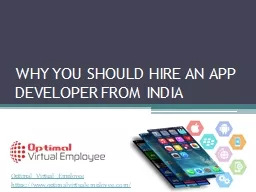PPT-Static Detection of Event-based Races in Android App
Author : SmoochieBoochie | Published Date : 2022-08-01
Yongjian Hu Univ of California Riverside Iulian Neamtiu NJIT Motivation Rise of EventDriven Systems Concurrency is a Serious Issue 66 of highseverity Android bugs
Presentation Embed Code
Download Presentation
Download Presentation The PPT/PDF document "Static Detection of Event-based Races in..." is the property of its rightful owner. Permission is granted to download and print the materials on this website for personal, non-commercial use only, and to display it on your personal computer provided you do not modify the materials and that you retain all copyright notices contained in the materials. By downloading content from our website, you accept the terms of this agreement.
Static Detection of Event-based Races in Android App: Transcript
Download Rules Of Document
"Static Detection of Event-based Races in Android App"The content belongs to its owner. You may download and print it for personal use, without modification, and keep all copyright notices. By downloading, you agree to these terms.
Related Documents














